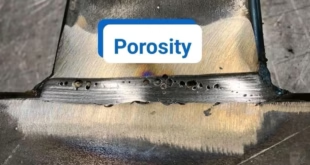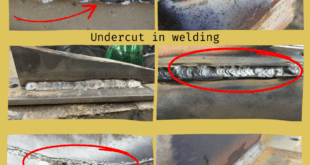Arc Instability and Feeding Problems
Welding, a fundamental process in fabrication and construction, relies on the controlled fusion of materials to create strong and durable joints. However, two common challenges faced in welding processes are Arc Instability and Feeding Problems. In this article, we will delve into these issues, exploring their definitions, significance, and the broader impact on welding processes.
Definition
Arc Instability refers to the undesirable variations in the welding arc during the process. It can manifest as flickering, erratic movement, or even complete disruption of the arc. This instability can compromise the quality of the weld, leading to defects and safety concerns.
Feeding Problems pertain to difficulties in the controlled delivery of consumable materials, such as welding wire or electrodes, to the welding zone. These problems can result in interruptions, uneven deposition, and defects in the weld.
Arc Instability
Explanation of Arc Instability
Definition and Causes
Arc Instability is characterized by irregularities in the welding arc during the welding process. These irregularities can result from various factors, including:
- Voltage Fluctuations: Sudden changes in voltage can lead to instability in the arc.
- Improper Shielding Gas Flow: In processes like MIG/MAG welding, inadequate shielding gas flow can destabilize the arc.
- Inconsistent Wire Feed: Irregular wire feeding in processes like MIG/MAG welding can contribute to arc instability.
Types of Arc Instabilities
There are different types of arc instabilities, each with its characteristics:
- Arc Flickering: The arc fluctuates in intensity, leading to an uneven weld bead.
- Arc Blow: The arc is deflected from its intended path, impacting weld quality.
- Arc Wander: The arc moves unpredictably, affecting the weld’s alignment and integrity.
Consequences of Arc Instability
Effects on Weld Quality
Arc instability can result in several weld defects, including:
- Incomplete Fusion: The irregular arc may not provide sufficient heat for proper fusion.
- Porosity: Unstable arcs can introduce porosity in the weld, weakening its mechanical properties.
- Cracking: Rapid changes in heat input may lead to weld cracking.
Safety Concerns
Beyond affecting weld quality, arc instability poses safety risks such as:
- Spatter Formation: Unstable arcs contribute to spatter, increasing the risk of burns and fire hazards.
- Electrical Hazards: Erratic arcs may pose electrical safety risks to the welder and surrounding environment.
Common Welding Processes Affected
MIG/MAG Welding
In MIG/MAG welding, where a continuous wire electrode is fed into the weld pool, arc instability can be caused by issues such as inconsistent wire feeding, improper shielding gas flow, or voltage fluctuations.
TIG Welding
TIG welding, known for its precision, can also experience arc instability due to factors like improper tungsten electrode preparation, gas flow issues, or inconsistent power supply.
Stick Welding
Stick welding, or Shielded Metal Arc Welding (SMAW), may encounter arc instability if there are fluctuations in the electrode’s arc length or if the coating on the electrode is inconsistent.
Feeding Problems in Welding
Understanding Feeding Problems
Definition and Causes
Feeding Problems in welding refer to challenges in delivering consumable materials, such as welding wire or electrodes, to the welding zone consistently. These problems may arise from:
- Improper Wire Tension: In wire-fed processes like MIG/MAG welding, incorrect tension in the feeding system can impede smooth wire delivery.
- Contaminated Electrodes: In stick welding, the coating on electrodes may become contaminated, affecting their feeding characteristics.
- Feeder Component Malfunctions: Mechanical failures or misalignments in feeding components can lead to disruptions in the material delivery process.
Types of Feeding Issues
Feeding issues can manifest in various forms:
- Wire Jamming: In wire-fed processes, the welding wire may jam in the feeding system, causing interruptions in the welding process.
- Irregular Electrode Feeding: In stick welding, irregular feeding of electrodes can result in uneven arc stability and weld quality.
Impact on Weld Quality and Efficiency
Weld Defects
Feeding problems directly influence weld quality, contributing to defects such as:
- Incomplete Penetration: Insufficient or irregular feeding may lead to incomplete penetration of the weld into the base material.
- Undercutting: Uneven feeding can result in undercutting, where the weld creates a groove in the base material, compromising joint strength.
Downtime and Increased Costs
Feeding problems can lead to operational inefficiencies, including:
- Increased Downtime: Frequent stoppages to address feeding issues can significantly reduce welding productivity.
- Higher Material and Labor Costs: Rework caused by feeding problems increases material consumption and labor costs.
Feeding Problems in Different Welding Methods
Wire Feeder Issues in MIG/MAG Welding
MIG/MAG welding relies on a continuous wire feeding system. Issues such as wire tangling, improper tension, or misalignment in the feeder can disrupt the smooth delivery of the welding wire, affecting the quality of the weld.
Electrode Feeding Problems in Stick Welding
Stick welding involves manual feeding of coated electrodes. Contamination of electrode coatings, inconsistent feeding, or electrode sticking can lead to irregular arc stability and compromised weld quality.
Factors Contributing to Arc Instability and Feeding Problems
Understanding the factors that contribute to arc instability and feeding problems in welding is essential for developing effective solutions. These factors can be categorized into external, equipment-related, and operator-related aspects.
External Factors
Environmental Conditions
Environmental conditions play a significant role in welding stability. Factors such as:
- Wind and Drafts: Air movement in the welding environment can affect shielding gas coverage and lead to arc instability.
- Humidity and Moisture: High humidity can impact electrode and filler material performance, contributing to feeding issues.
Power Supply Variations
Power supply variations can have a direct impact on the stability of the welding arc. Fluctuations in voltage or current can lead to inconsistent arc behavior and affect the overall welding process.
Equipment-related Factors
Welding Machine Specifications
The specifications of the welding machine used in the process can contribute to arc instability and feeding problems. Factors include:
- Power Source Stability: Inconsistent power sources can lead to variations in arc behavior.
- Control Mechanisms: The effectiveness of control mechanisms in the welding machine influences the precision of the welding process.
Consumable Quality
The quality of consumables used in welding, such as electrodes or welding wire, is crucial. Issues may arise from:
- Inconsistent Wire Quality: Variations in wire diameter or composition can impact feeding and arc stability.
- Contaminated Electrodes: Presence of impurities in electrodes can contribute to arc instability and weld defects.
Operator-related Factors
Skill and Training
The skill level and training of the operator significantly influence welding performance. Factors include:
- Arc Length Control: Operator skill in maintaining a consistent arc length is vital for stability.
- Understanding of Equipment: Adequate training ensures operators can effectively use and troubleshoot welding equipment.
Maintenance Practices
Maintenance practices directly impact equipment performance and, consequently, arc stability and feeding. Considerations include:
- Regular Inspection and Calibration: Ensuring welding machines are regularly inspected and calibrated contributes to stable operation.
- Consumable Handling: Proper storage and handling of consumables prevent issues such as contamination.
Strategies for Arc Stability and Feeding Problem Mitigation
Addressing arc instability and feeding problems in welding involves implementing a combination of technological solutions, operator training, and environmental/process control measures. Let’s delve into each category.
Technological Solutions
Advanced Welding Machines
Utilizing advanced welding machines equipped with innovative features can significantly contribute to arc stability and feeding precision. Key aspects include:
- Stable Power Sources: Welding machines with stable power sources help maintain consistent arc behavior.
- Enhanced Control Systems: Advanced control mechanisms enable operators to fine-tune welding parameters for optimal performance.
Improved Consumable Designs
Incorporating improved consumable designs is crucial for overcoming feeding issues. This involves:
- Precision Wire Feeding Systems: Enhanced wire feeding mechanisms in MIG/MAG welding systems reduce the likelihood of jams and irregular feeding.
- Quality Control in Consumables: Stringent quality control measures in consumable manufacturing ensure consistent performance.
FAQs
How can I recognize arc instability during welding?
Look for irregular sparks, erratic arc behavior, and inconsistent bead appearance.
What role do environmental factors play in arc instability?
Factors like wind, humidity, and temperature can affect the stability of the welding arc.
Why is operator training important in preventing arc instability?
Skilled operators can adapt to changing conditions and troubleshoot issues effectively.
What are the economic impacts of feeding problems in welding?
Feeding problems can lead to downtime, rework costs, and a decrease in overall productivity.
How can manufacturers and welders collaborate to address welding challenges?
Manufacturers benefit from welder feedback, leading to continuous improvements in equipment design.
Conclusion
The welding industry’s commitment to addressing and overcoming arc instability and feeding problems is pivotal for advancing the field. By adopting a proactive approach, staying informed about emerging trends, and investing in training and technology, welders and industry stakeholders can collectively contribute to a safer, more efficient, and innovative future for welding practices.
 Welding of Welders All about Welding and Welders
Welding of Welders All about Welding and Welders




